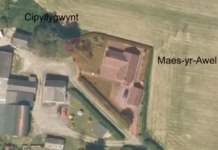A new report predicts the areas of the UK which will have the highest disposable incomes by 2030, highlighting the fastest growing areas over the last (and next) 10 years.
- Kensington and Chelsea currently have the highest average gross disposable household income (GDHI) in England ($76,643).
- Northern cities have experienced the biggest increase in disposable income over the last 10 years.
- The North of England is also predicted to see the biggest increase in disposable income over the next 10 years, too.
Which UK areas’ GDHIs have grown the most recently, and where will they be in a few years’ time?
Analysing ONS revenue data from 1997 to 2022, OLBG has revealed the UK areas with the highest average GDHIs, highlighting the locations that have experienced the biggest rise over the last 10 years and predicting where these figures might be by 2030.
Kensington and Chelsea expected to stay top the list by 2030
Running the data from 1997 through a linear forecast, it’s predicted that Kensington and Chelsea is set to remain the area with the highest average GDHIs in the UK (£76,643). Comparing this to the lowest predicted area, Blaenau Gwent in Wales (£12,427), the gap is drastic.
In fact, the gap between first and second is also significant. Whilst Westminster comes second, with a predicted GDHI of $49,827, Kensington and Chelsea’s figure is a huge 54% higher.
London dominates the list, with no areas outside the south making it into the top 10 either. Camden, comes in third place, with a predicted disposable income of £39,395 by 2030; followed by Hammersmith and Fulham (£38,200).
The table below shows which UK areas are predicted to have the highest GDHI by 2030:
| # | Location | 2015 | 2020 | 2025 | 2030 |
| 1 | Kensington and Chelsea | £79,703 | £70,776 | £74,621 | £76,643 |
| 2 | Westminster | £52,280 | £46,148 | £48,579 | £49,827 |
| 3 | Camden | £39,613 | £36,747 | £38,554 | £39,395 |
| 4 | Hammersmith and Fulham | £39,533 | £35,670 | £37,303 | £38,200 |
| 5 | Richmond upon Thames | £40,068 | £35,659 | £36,949 | £37,824 |
| 6 | Wandsworth | £36,445 | £33,433 | £35,032 | £35,805 |
| 7 | Elmbridge | £37,144 | £33,503 | £34,629 | £35,411 |
| 8 | St Albans | £30,240 | £28,593 | £29,734 | £30,474 |
| 9 | Islington | £30,783 | £28,474 | £29,366 | £29,735 |
| 10 | Waverley | £31,313 | £27,868 | £28,803 | £29,425 |
Northern cities have seen the biggest increase in GDHI over the last 10 years
In first place, with a 28.8% increase in GDHI compared to 2012, is Barrow-in-Furness, located in Cumbria. Households now have an average disposable income of £19,046, compared to £14,786 in 2012.
Manchester has also seen a significant boom in disposable income over the last 10 years, experiencing an increase of 28.3%. Diving into the numbers, average GDHI in 2022 was £15,389, over £3,000 more than 2012.
The table below shows the UK areas where GDHI has increased (as a percentage) the most over the last 10 years (2012 – 2022):
| # | Location | 2012 | 2022 | % Change 2012 – 2022 |
| 1 | Barrow-in-Furness | £14,786 | £19,046 | 28.8% |
| 2 | Manchester | £11,996 | £15,389 | 28.3% |
| 3 | Carlisle | £15,463 | £19,791 | 28.0% |
| 4 | Cheshire East | £19,254 | £24,551 | 27.5% |
| 5 | Eden | £17,988 | £22,853 | 27.0% |
| 6 | Darlington | £14,374 | £18,205 | 26.6% |
| 7 | Stockport | £17,420 | £21,978 | 26.2% |
| 8 | Copeland | £16,018 | £20,203 | 26.1% |
| 9 | Tameside | £13,777 | £17,357 | 26.0% |
| 10 | Northumberland | £17,273 | £21,656 | 25.4% |
Which areas are expected to see the biggest increase in disposable income over the next 10 years?
When using a prediction model to see which areas are likely to experience the biggest growth over the next 10 years, the North of England once again dominates the top 10.
Similar to the previous top 10 above, Barrow-in-Furness comes top, and is expected to see a 22.9% increase by 2032, taking their predicted disposable income to £23,415.
Carlisle, who also appeared in the above table, sit a close second at 21.2%, with Middlesbrough (20.9%), Copeland (20.8%), and Manchester (20.3%) all making it into the top five.
The table below shows the UK areas where GDHI is predicted to increase (as a percentage) the most over the next 10 years (2022 – 2032):
| # | Location | 2022 | 2032 | % Change 2022 – 2032 |
| 1 | Barrow-in-Furness | £19,046 | £23,415 | 22.9% |
| 2 | Carlisle | £19,791 | £23,980 | 21.2% |
| 3 | Middlesbrough | £16,883 | £20,404 | 20.9% |
| 4 | Copeland | £20,203 | £24,411 | 20.8% |
| 5 | Manchester | £15,389 | £18,507 | 20.3% |
| 6 | Redcar and Cleveland | £17,849 | £21,463 | 20.2% |
| 7 | Hartlepool | £17,166 | £20,621 | 20.1% |
| 8 | South Tyneside | £17,000 | £20,403 | 20.0% |
| 9 | Tameside | £17,357 | £20,814 | 19.9% |
| 10 | Darlington | £18,205 | £21,782 | 19.7% |
For more information, please visit the site here: https://www.olbg.com/blogs/biggest-disposable-incomes

| [donate]
| Help keep news FREE for our readersSupporting your local community newspaper/online news outlet is crucial now more than ever. If you believe in independent journalism,then consider making a valuable contribution by making a one-time or monthly donation. We operate in rural areas where providing unbiased news can be challenging. |






















